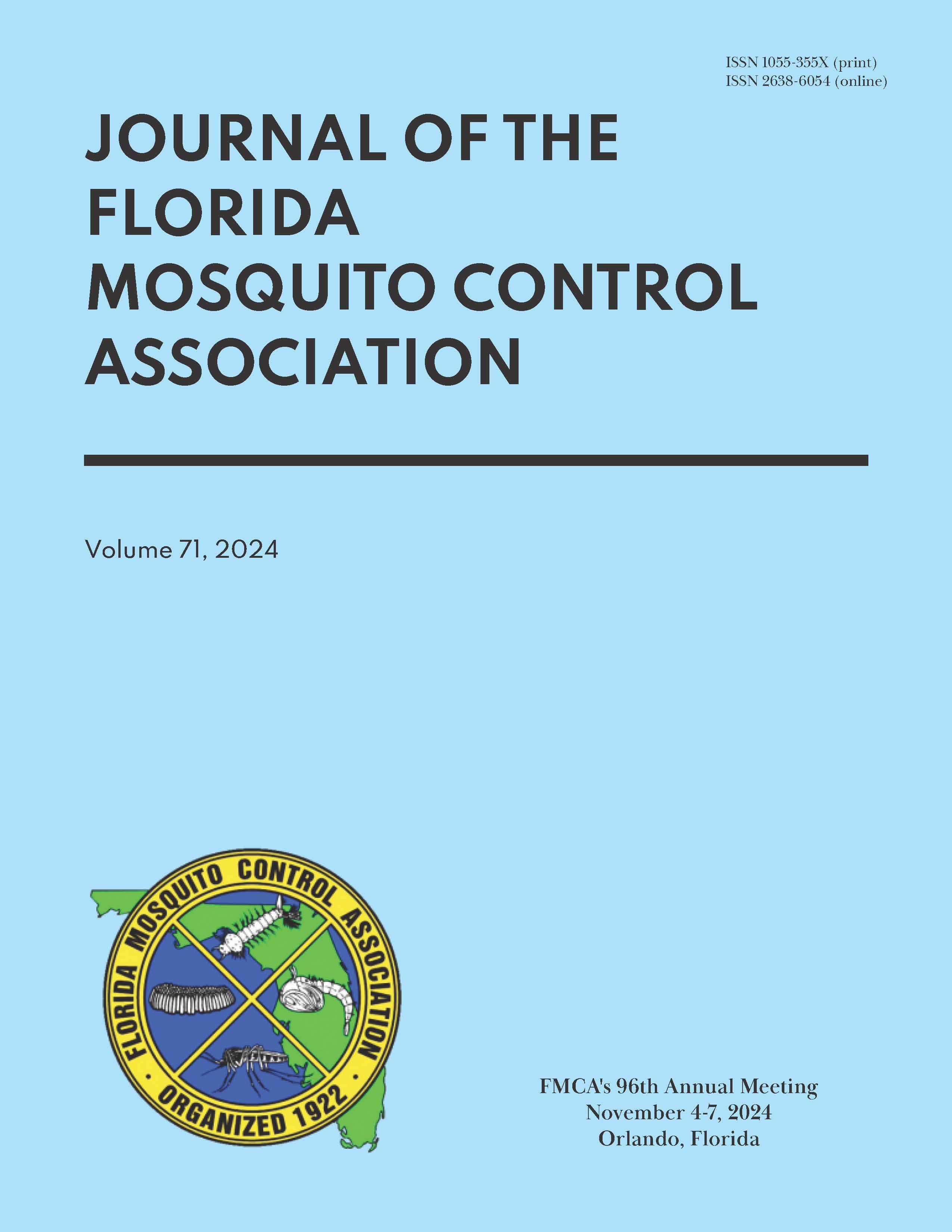SALINITY EFFECTS ON THE DISTRIBUTION OF AEDES AEGYPTI AND AEDES ALBOPICTUS IN ST. JOHNS COUNTY, FLORIDA
DOI:
https://doi.org/10.32473/jfmca.71.1.135293Keywords:
Aedes aegypti, Aedes albopictus, container-inhabiting, abundance, distribution, salinityAbstract
The distribution of Aedes aegypti in St. Johns County (SJC), Florida is suggested to be coastal along the inter-coastal waterway. Anastasia Mosquito Control District (AMCD) conducted a study to investigate the effects of salinity on the distribution of container- inhabiting Aedes in SJC. Mean weekly abundances of Aedes aegypti and Aedes albopictus at 7 different distances along the coastal-inland gradient, ranging from the SJC coast to the St. Johns River, were monitored for 10 weeks. Bi-weekly salinity measurements of potential Aedes breeding containers were obtained at each distance. A laboratory test was conducted by allowing preferential oviposition at different salinity levels and adult emergence was monitored. Both container salinity and Ae. aegypti abundance were significantly higher up to 5.0 km from the coast compared to the other distances. Ae. aegypti abundance was positively and negatively associated with the container salinity and distance from the coast respectively. Ae. albopictus abundance was significantly different (lower) only at the distance at which the highest salinity was recorded. The association of abundance (positive) was significant only with the distance from the coast. The adult emergence rate of Ae. aegypti in the laboratory was higher at higher salinity levels up to 5 ppt while there was no significant difference in Ae. albopictus emergence rate at different salinities. The study demonstrated a possible salinity effect on the distribution of Ae. aegypti but not Ae. albopictus in SJC, FL. The results warrant further studies on salinity effects with other confounding environmental factors that would contribute to the distribution of the two species in the county.
Downloads
Published
Issue
Section
License
Copyright (c) 2024 Vindhya S. Aryaprema, Kassidy Caride, Connor Kuppe, Rui-De Xue, Whitney A. Qualls

This work is licensed under a Creative Commons Attribution-NonCommercial 4.0 International License.

